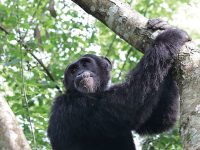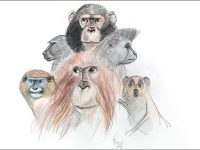Scientific photography and animal behaviour
A historical perspective
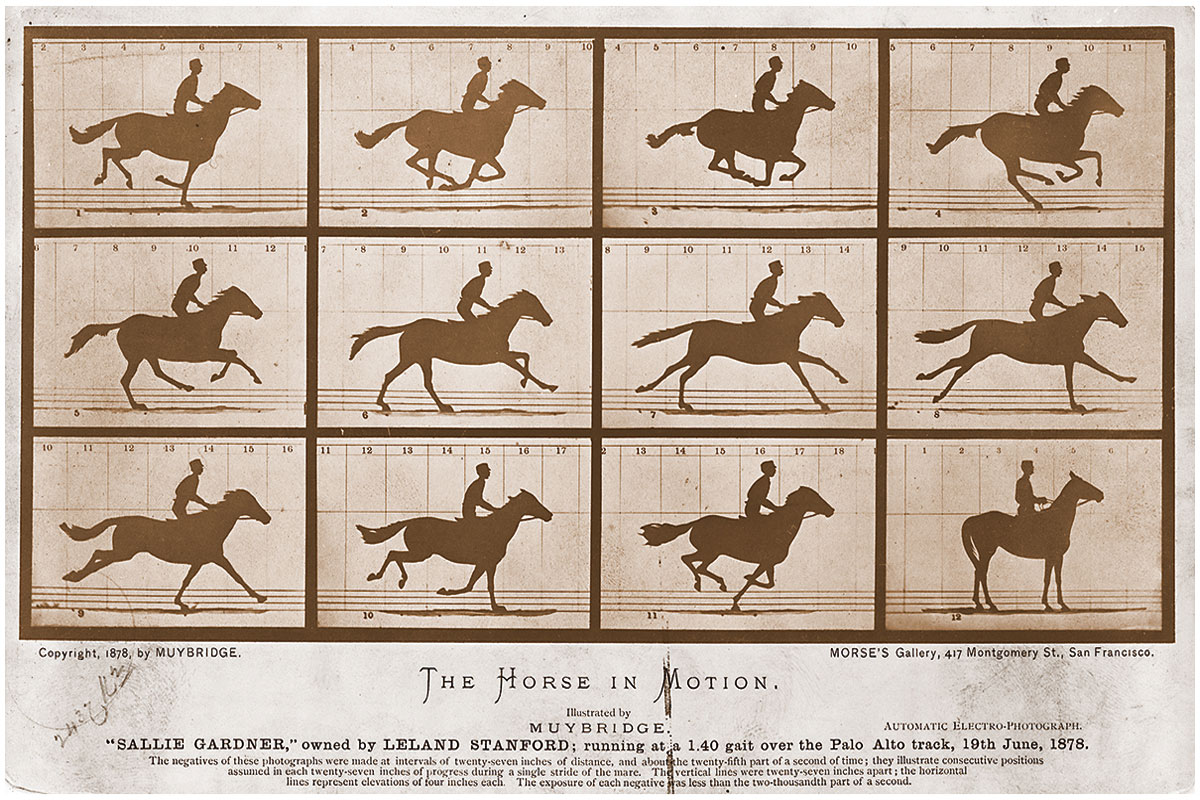
Louis Daguerre imagined that his invention would be useful mainly for artistic purposes or for personal use (portraits and travel diaries, etc.), but in fact photography soon became a valuable ally of science. The observation and documentation of natural phenomena is one of the pillars of the scientific method. In this context, photography guarantees objectivity and authenticity in a way that other alternative techniques cannot. Moreover, as a visual tool, it gives us access to phenomena that cannot be perceived or processed by the human eye. A book on the expression of emotions published by Charles Darwin 150 years ago marked the beginning of scientific photography.
Keywords: photography, ethology, Darwin, animal behaviour, emotional expression.
Obtaining a stable and permanent record of behaviour has traditionally been one of the major methodological challenges of ethology, the biological study of behaviour. Behaviour is ephemeral, and once an animal has performed a behaviour, it is no longer observable and therefore, no longer measurable. Until recently, the only way to document this was by drawing; indeed, the ability to draw was considered an essential skill for any aspiring ethologist. The drawings still used by many ethologists today are simple and schematic; their purpose is to depict the distinctive features of the behaviours they illustrate. In some exceptional cases, however, these drawings have undeniable aesthetic qualities. One example are the drawings made by Jordi Sabater Pi (1978), a pioneer of ethology in Spain, to illustrate his work on tool use among chimpanzees. However, even the most skilled illustrator is subject to errors and inaccuracies in the depiction of behaviour. This is one of the main reasons why photography and cinematography have become increasingly important in the ethologist’s toolbox since their introduction in the 19th century.

Until recently, the only way to document animal behaviour was by drawing. The image shows an illustration of a chimpanzee feeding on the termites that have become attached to a twig that the chimpanzee uses as a tool for «termite fishing». Drawing by Jordi Sabater Pi, one of the pioneers of ethology in Spain. / Fons Jordi Sabater Pi – CRAI Biblioteca de Belles Arts – Universitat de Barcelona
Darwin and emotional expression
As in so many other fields, Charles Darwin was also a pioneer in the use of photography to document behaviour. In On the origin of species (1859) and later in The descent of man (1871), Darwin laid the foundations for his theory of evolution by natural selection and the special case he called sexual selection. In these works, he described how different adaptations allow organisms to survive, compete, and attract mates. Many of these adaptations are morphological or physiological. But Darwin realised how crucial it was to the success of his theory to show that behaviour was also the product of natural selection. In 1872 he published The expression of the emotions in man and animals. With this book, originally intended as a chapter in The descent of man, Darwin extended his theory into the realm of behaviour, specifically human emotional expression. According to the dominant paradigm of the mid-19th century, facial expressions were exclusive to our species, the work of a divine creator intended to express man’s uniquely exquisite feelings. For Darwin, facial expressions and their associated gestures, postures, and vocalisations were the visible manifestation of internal states such as anger, pain, fear, or joy. He described expressions corresponding to different emotional states and noted their similarities to the expressive behaviour of primates and other animals. For Darwin, these similarities were clear evidence of evolutionary continuity between different species. Therefore, facial expressions could be interpreted not as evidence of divine intervention, but as the result of a process of natural selection.
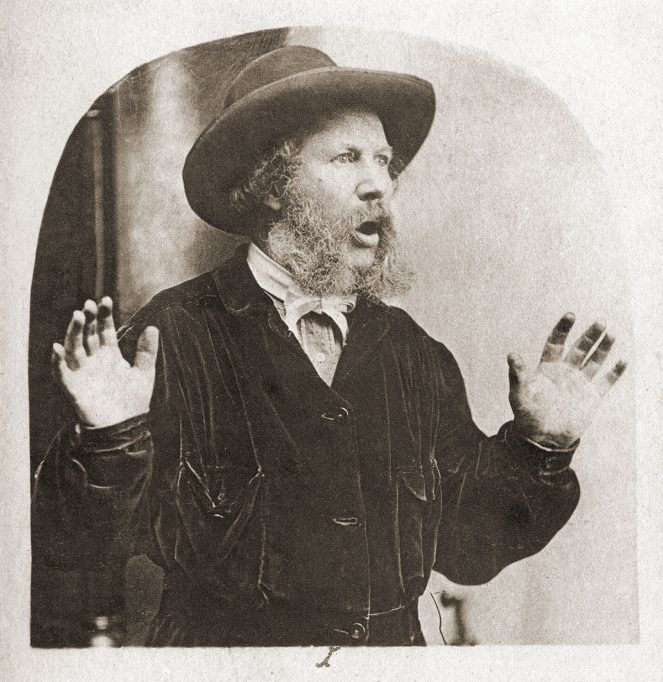
The image shows Oscar Rejlander, the Swedish-born photographer commissioned by Charles Darwin to take most of the photographs included in The expression of the emotions in man and animals (1872). Rejlander and his wife Mary Bull also modelled for some of the photographs. / Zeno.org
One of the central themes of The expression was the idea that the facial expressions that accompany basic emotions are the same for all human beings, regardless of race or culture. This idea was particularly important to Darwin because it supported his arguments about the common origin of human races and contradicted some racists of his time who argued that Europeans descended from more advanced ancestors than Africans. To demonstrate the universality of facial expressions, Darwin used several types of evidence. One was to show photographs of facial expressions to different observers and have them write down the emotions they thought corresponded to each expression. Thus, Darwin inaugurated a methodology for studying facial expressions that is still in use today (Ekman, 1970).
The expression was also one of the first scientific books to use photographs as illustrations (although Darwin may have been inspired by the work of the French physician and neurologist Duchenne de Boulogne, with whom he corresponded and who, in 1862, used photographs to illustrate his findings on the neurophysiological mechanisms of facial expression). In all his previous books, Darwin had used engravings, either his own or those of others, as illustrations (Voss, 2010). The expression contained, in addition to a large number of engravings, seven plates with a total of 30 photographs. They illustrated the expressive movements of children, the mentally ill, and some of Darwin’s relatives or acquaintances (Prodger, 2009).
Darwin was initially interested in works of art and how painters and sculptors of different periods had depicted expressive movement. However, his annotations on the back of the reproductions of artworks he avidly collected show that he often disagreed with the details of the artists’ depictions. It was also clear that artists and illustrators found it difficult to correctly capture the expressive details in which Darwin was so interested. The famous engravings in The expression illustrating the behaviour of dogs and cats, for example, passed through the hands of several illustrators and underwent multiple corrections before reaching their final version. Photography, though still in its infancy, offered Darwin an alternative for making a more reliable and objective record of human expression.
But Darwin was not a photographer. In the years leading up to the publication of The expression, he spent his time scouring photographic studios and bookshops in London in search of photographs illustrating various aspects of emotional expression in the human species. These excursions were almost the only occasions on which Darwin left Down House during this period of his life, a true testament to their importance to him. For Darwin, photographs were data, just like the shell of a mollusc or a specimen of a certain beetle species. They allowed him to identify patterns in human emotional expression that were invisible to the naked eye and to hypothesise about their meaning and evolution. But they were also the empirical evidence he needed to support his conclusions.
When the time came to prepare his notes for the publication of The expression, Darwin enlisted the services of Oscar Rejlander, one of the most influential photographers of the day. Rejlander contributed 19 of the 30 photographs in the book, and even served as a model for some of them. Initially, John Murray, the publisher, objected to the inclusion of photographs in The expression because of the considerable extra cost. Darwin insisted, convinced that the photographs not only provided essential support for his theories, but would also increase sales. In the end, Murray gave in to Darwin’s wishes. After all, Darwin was one of the most successful authors of his time. The book was a huge success for the publishers: out of an initial print run of 7,000 copies, 5,267 copies were sold straight away.
Recording an infant crying
Photography in the mid-19th century was a complex and cumbersome affair. Exposures were made on glass plates that had to remain wet throughout the process, and plate preparation, exposure, and development had to be done in the same session. To achieve acceptable results, the photographer had to be both an artist and an experienced chemist. Darwin was aware of the serious drawbacks of photography for recording expressions. One of them was that exposure times were very long, up to several minutes, and so they were inadequate for capturing expressive details that were barely visible for a few tenths of a second. Instant photography was still many years away.
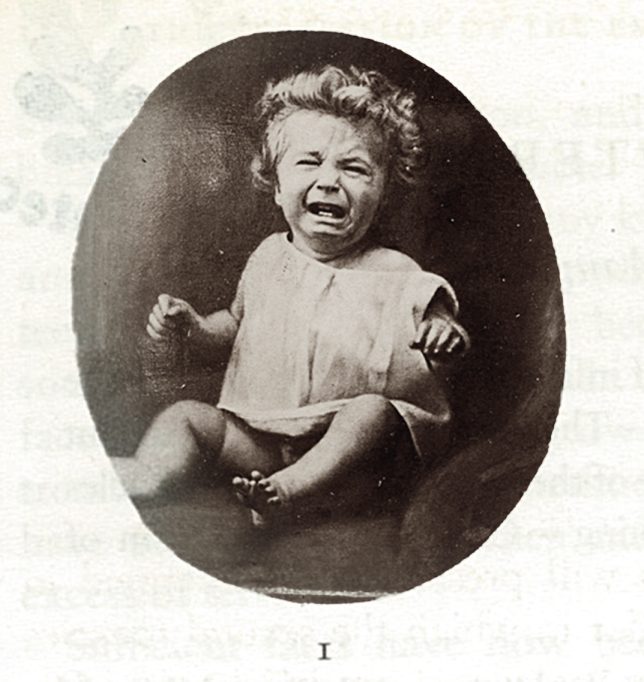
Picture of a crying child included by Darwin in The expression of the emotions in man and animals, which would become popularly known as Ginx’s baby, the character in a popular novel by Edward Jenkins. / Wikimedia
One of the most famous photographs of The expression shows a child crying inconsolably. Darwin was particularly interested in illustrating the details of this behaviour – the closed eyes, the frown, the half-open mouth, and the exposed gums – and for several years he searched unsuccessfully for a photograph that adequately depicted them. Finally, he asked Rejlander to photograph a child screaming and crying loudly. In response to the challenge, Rejlander produced the image that would eventually be published in The expression. The photograph is admirable because it manages to capture the desired behaviour: it does not take much to imagine the screams and sobs that must have been heard in Rejlander’s studio as he took the picture. It is also a technical marvel, considering how long the behaviour lasted in relation to the long exposure times that were common at the time. The expression was a bestseller, but even more so was the image of the crying child, which took on a life of its own outside Darwin’s book and became popularly known as Ginx’s baby. For some unknown reason, many people identified the boy in the photograph with the leading character of a Dickensian-style novel that was popular at the time called Ginx’s baby: His birth and other misfortunes (1870) by Edward Jenkins. It is estimated that Rejlander sold more than a quarter of a million reproductions of the photograph in the form of prints or business cards, and indeed Ginx’s baby was one of the most important sources of income in his entire career as a photographer (Prodger, 2009).
However, the image of this crying child is misleading: it is not a real photograph, but a drawing that Rejlander photographed in order to obtain a negative that he could reproduce as if it were a photograph. Rejlander had indeed succeeded in photographing the child according to Darwin’s specifications, but the original negative was very small, poorly defined, and obviously blurred. Rejlander projected the enlarged image, drew over it to correct the defects of the original, and then photographed it. Judged by today’s standards, many would probably call the process a fraud. At the time, however, there were no established rules and the role of photography as scientific evidence was not yet clearly defined. For Rejlander, photography was a means of artistic expression and he did not hesitate to manipulate his creations to achieve the desired results. One of the methods he used, with surprising results, was to print several negatives on the same positive, thus creating compositions and scenes of great artistic value that had never actually existed. Darwin was aware that the image of the crying child had been manipulated, but apparently had no objection to its inclusion in The expression.
In many ways, Rejlander was an innovator. In 1873, he published an article entitled «On photographing horses», in which he described a process for obtaining sequential images of a moving horse. The process used an array of synchronised cameras and was strikingly similar to the one used a few years later by Eadweard Muybridge – another photographer interested in the movement of horses and considered by many to be a clear precursor to the cinematograph. Muybridge was commissioned by Leland Stanford, a California-based politician and tycoon, to photograph his estate and horses. Stanford bred racehorses and was convinced that the way artists depicted trotting or galloping horses was wrong. Galloping horses were usually depicted with their front legs stretched forward and their hind legs stretched backward, neither of them in contact with the ground. Over the course of several years, Muybridge perfected a process that eventually allowed him to take sequential pictures of the movements of horses. His photographs showed that all four legs of a galloping horse lose contact with the ground at regular intervals, but not at the moment depicted by many artists: they are in the air when both the front and hind legs are tucked under the horse’s body.
Another problem that worried Darwin was the spontaneity of the expressions in the photographs he used. Knowing that they were being photographed, the models could voluntarily or involuntarily alter some crucial details of their expressions. An ingenious solution to this problem was found several decades later by the ethologist Irenaeus Eibl-Eibesfeldt, one of Konrad Lorenz’s most prominent students. Like Darwin, Eibl-Eibesfeldt was interested in recording the facial expressions and expressive movements of individuals from different cultures and ethnic groups. To ensure that the expressions of the people he photographed were spontaneous, he used a modified lens with a prism inside and a camera with a lateral aperture. This lens allowed him to photograph the behaviour of people standing next to him and his camera, while simulating the recording of the behaviour of those in front of him.
Ethology and photography
In 1973, a century after the publication of The expression, ethology came of age as a scientific discipline. That year, the Nobel Prize in Physiology or Medicine was awarded to three Central European researchers – Konrad Lorenz, Nikolaas Tinbergen, and Karl von Frisch – for their decisive contribution to the study of animal and human behaviour. Of the three, the Dutchman Niko Tinbergen excelled in his use of photography (and especially cinematography) as a tool in the study of behaviour. Tinbergen insisted that each image should tell a story about the animals depicted and their behaviour. For him, photography was a non-lethal form of hunting that allowed him to capture details of the animals’ interactions with each other and with their environment (Shaffer, 1991).
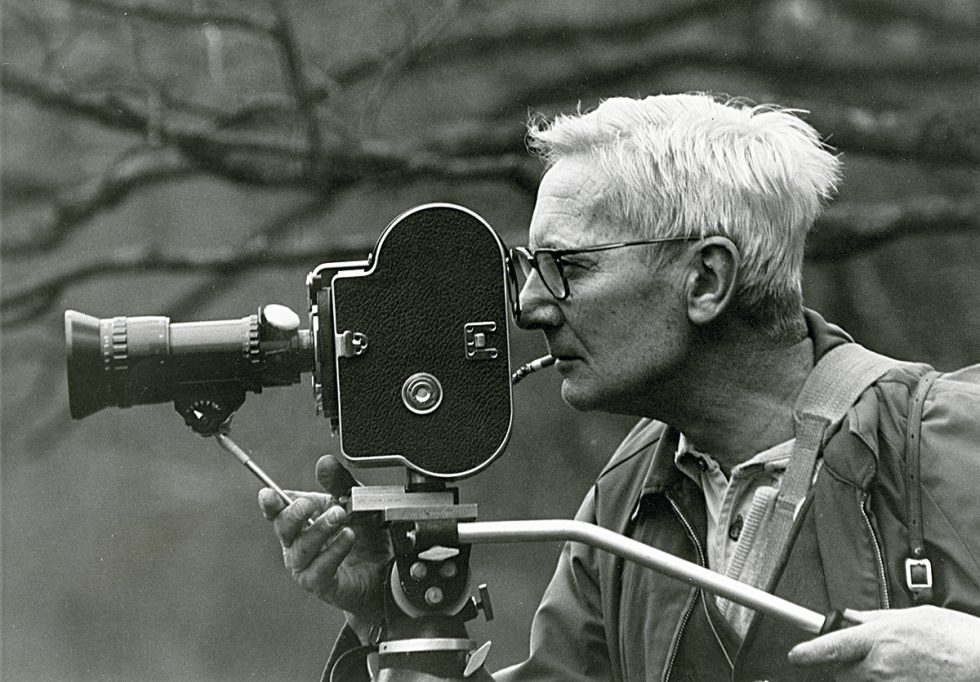
Niko Tinbergen was a pioneer in making nature documentaries with scientific content. In 1949, shortly after moving to Oxford, he acquired his first film camera, a Bell and Howell HR-1, which he used to film the behaviour of all kinds of animals. / Lary Shaffer – Royal Society
Photographic technology had advanced considerably by the time Tinbergen began photographing animals, especially birds, in his native Holland. However, photographing wild animals in the field remained a difficult task. The cameras were large and heavy and the images were recorded on fragile glass plates coated with a gelatine emulsion containing silver salts. In a particularly good session, Tinbergen could expose a maximum of four to six plates, which he then had to carry by bicycle to the laboratory for development. He often complained that the best shots were broken on the way. A further complication was that the camera did not allow focusing through the lens and so framing and focusing were complex and highly haphazard tasks.
After World War II, Tinbergen acquired his first SLR camera, a Swiss-made Alpa Prisma-Reflex, but he did not have enough money to buy the powerful telephoto lenses he needed to photograph the birds he was studying. Fortunately, lenses originally used for aerial photography were available from the military at the time. These were of exceptional optical quality, but were not designed to be mounted on a conventional camera. Nonetheless, Tinbergen managed to get his hands on some of these lenses and technicians in his department at Leiden University installed them in mounts made from pieces of brass tubing painted black. This gave Tinbergen two telephoto lenses with focal lengths of 280 and 340 mm. The result was not elegant, but it allowed him to record images that were high quality for the time.
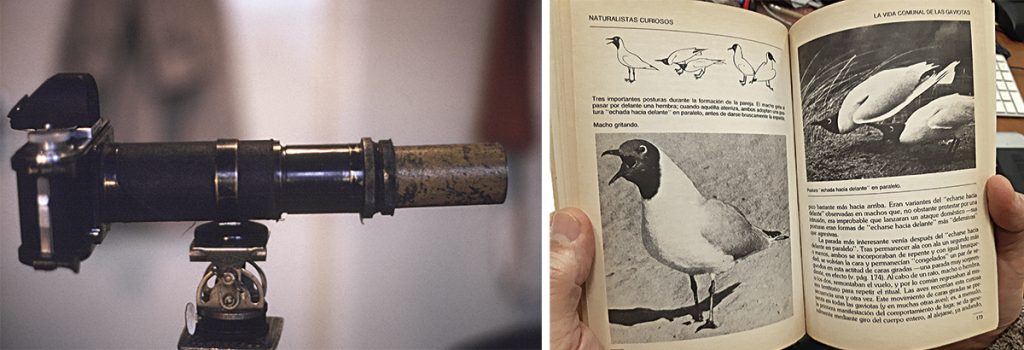
Reflex camera used by Tinbergen to photograph animals in the wild. Many of the photographs of seagulls that illustrate some of his books – such as Curious naturalists (1958), in the second picture – were taken with this camera. / Royal Society / Metode
His reputation as a photographer led Tinbergen to participate in one of the most famous experiments in the history of biology. In the 1950s, Bernard Kettlewell, a researcher at Oxford University, conducted several experiments to study the phenomenon known as industrial melanism in the peppered moth. Before the Industrial Revolution, moths of this species were mostly light-coloured. Afterwards, almost all of the moths collected in polluted areas were dark. To explain this change, the entomologist James W. Tutt had suggested that dark moths survive better than light moths in polluted areas because the birch trunks in these areas, darkened by pollution, allowed them to better camouflage themselves from predators. However, Tutt’s hypothesis had never been experimentally confirmed.
In 1953, Kettlewell released several hundred light and dark moths in a contaminated area near Birmingham. When he recaptured the released moths a few days later, he found, in line with Tutt’s hypothesis, that the recapture rate of the dark moths was twice that of the light moths. He published the results of his experiment (Kettlewell, 1955) but the paper was met with scepticism. Some doubted that the difference in survival between light and dark moths was of the magnitude suggested by the experiment. To answer the criticism, Kettlewell carried out a second experiment in 1955 in an uncontaminated area near Dorset. This time he persuaded Tinbergen, then a lecturer at Oxford, to accompany him to film and document the results. Tinbergen accepted and spent three weeks in the field with Kettlewell, photographing and filming the behaviour of the moths and their predators. Tinbergen’s footage clearly showed how different species of birds selectively preyed on the dark moths, which were easily visible on light-coloured tree trunks. This work was crucial in gaining widespread acceptance for Kettlewell’s results (Rudge, 2003). Despite the attacks it received in the post-Kettlewell era, industrial melanism in the peppered moth remains an iconic example of Darwinian evolution in action (Majerus, 2009).
Communicative signals in lizards
Our research team has been studying the behaviour of various species of lizards, particularly lacertids (of the family Lacertidae), for over three decades. Photography in its various forms has allowed us to document hitherto unknown aspects of their communicative signals.

Field photograph of a specimen of the species Podarcis pityusensis (Formentera, Spain), shown both in the visible (left) and ultraviolet spectrum (right). The photograph on the right shows the presence of light-coloured spots on the flanks of the lizard. These spots, which we see as blue, actually have their peak reflectance in the ultraviolet range, and are therefore blue-ultraviolet spots (the magenta hue of the photograph is due to peculiarities in the functioning of the camera sensor). / Javier Ábalos
An important class of visual signals in these species are chromatic signals, i.e., the colouration of the animals. The study of animal colouration has undergone a real revolution in recent decades, especially since the discovery that many vertebrates are capable of perceiving ultraviolet radiation (corresponding to wavelengths below 400 nm). In addition, many also possess colour patterns that are only visible to receptors whose visual system is sensitive to the ultraviolet part of the spectrum. Because humans are unable to perceive the ultraviolet, special techniques and instruments are needed to study these colorations. One of these is ultraviolet photography, which reveals coloured spots that selectively reflect (or absorb) ultraviolet radiation.
The first species in which we documented the presence of ultraviolet colouration was the Tenerife lizard (Gallotia galloti). These lizards have conspicuous blue spots on their sides and gular skin, but the peak reflectance of these markings is actually below 400 nm. We see them as blue because we lack ultraviolet-sensitive photoreceptors, but lizards see them very differently. Photography cannot replicate a lizard’s visual perception, but it can reveal areas of its body that reflect ultraviolet radiation and are therefore invisible to us. We used a conventional analogue camera and standard black and white film to photograph the Tenerife lizard. The emulsion in most photographic film is sensitive to ultraviolet light, so to avoid unwanted optical effects the lenses are coated to limit this radiation. However, with some ingenuity and patience, it is possible to find certain combinations of camera, lenses, and film which, with the appropriate light source and filters, allow us to take photographs in this part of the spectrum. However, analogue ultraviolet photography is fraught with difficulties. Both focusing and exposure times are essentially a matter of trial and error, and to check the results of a photographic session one must wait until the film roll has been fully exposed and subjected to a chemical process of film development.
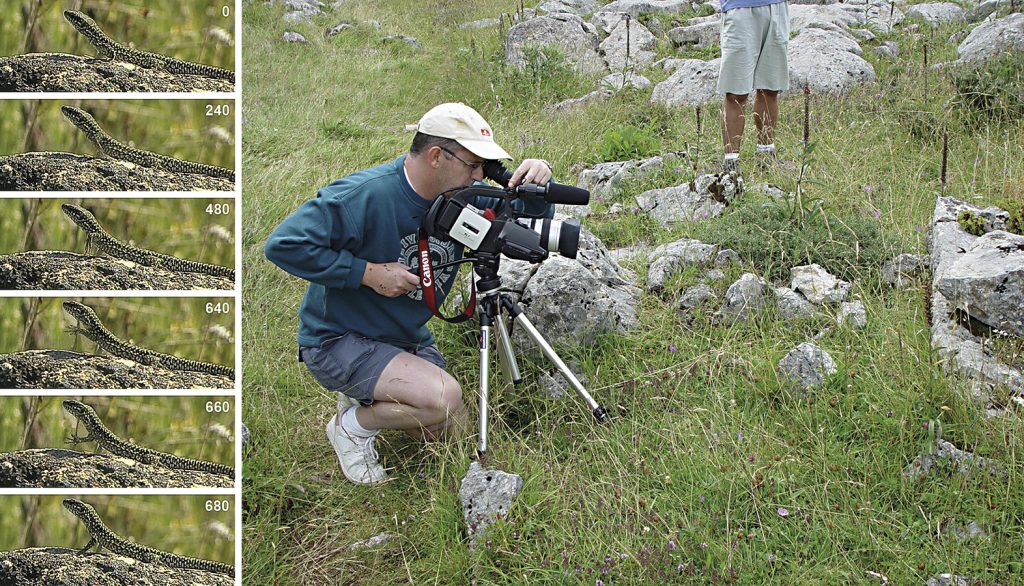
The author of this article filming the behaviour of lizards in the field (Somiedo, Spain). The sequence of frames on the left illustrates an anti-predator foot shake in a lizard of the species Podarcis muralis. / Enrique Font
Few fields have been as affected by the digital revolution as much as photography, especially scientific photography. Modern digital cameras have many advantages over the analogue cameras that were considered state of the art just 20 years ago. One major advantage of digital photography is its immediacy: with a digital camera, you can check how effective your shots are as soon as you take them. The optical sensor of a digital camera is covered with a filter to remove ultraviolet light. Therefore, to take UV pictures, this filter must be removed, and we must fit the camera with a lens that allows sufficient ultraviolet radiation to pass through. Using a combination of digital photography and spectrophotometry, we have demonstrated the existence of ultraviolet colouration in many species of lizards in the Mediterranean Basin (Badiane & Font, 2021). Because lizards are able to perceive them, these markings are thought to function as chromatic signals, especially in male–male interactions, and are likely part of a «private» communication system that only lizards and other animals with ultraviolet vision have access to.
In addition to colouration, many lizards use dynamic (i.e., movement-based) visual cues. These include foot shakes, which consist of rhythmic up and down movements of one or more of the lizard’s legs, sometimes following an elliptical or circular trajectory. The foot shakes of some Asian and Australian lizards are known in some detail. However, those of lacertids, which are more common in the Old World, remain poorly understood. The leg movements are fast, short (many foot shakes last less than a second), and of low amplitude, which probably explains why they have gone unnoticed by many researchers. Photography, in this case cinematography, has once again proved indispensable in the study of this type of behaviour.
As well as being an excellent illustrator, Konrad Lorenz was a pioneer in the use of cinematography to study animal behaviour. The techniques of slow motion and stop motion allowed him to describe the rapid and complex behaviours that are part of the courtship of ducks and geese in extraordinary detail (Schleidt & Oeser, 2011). The opposite technique, fast motion, is also useful because it can capture aspects of behaviour that occur on a relatively slow time scale, such as the route an animal takes as it moves around its home range or the movements of a butterfly pupae as it transforms into an adult.
More recently, high-resolution videography has revealed, for example, that some African bird species move their legs rhythmically while singing during courtship. The movement is imperceptible in footage taken at 30 frames per second, but at 300 frames per second, males and females can clearly be seen moving their legs up and down, as if tap dancing (Ota & Gahr, 2015). Using the same technique, we were able to document the presence of foot shakes in many lacertids. In fact, the repertoire of some species includes several types of foot shakes that differ in their structure (duration, amplitude, and trajectory followed by the leg) and in the context in which they are displayed. Some foot shakes are social signals directed at other lizards. Others are signals directed at potential predators (including humans), apparently informing them that they have been detected (Font et al., 2012). Thus, the existence of different types of foot shakes adds a new dimension to studies of visual communication in lizards in general and in lacertids in particular.
More than 150 years have elapsed since the publication of The expression of the emotions in man and animals. During this time, scientific photography has undergone radical changes and its role as a fundamental tool in the study of behaviour has been consolidated. It is impossible to predict how photographic technology will change in the future, but it will almost certainly continue to push the boundaries of the human visual system, allowing us to observe and record unexpected details of animal and human behaviour.
Acknowledgements
The work with lizards described in this article was partly funded by projects from the Ministry of Science and Innovation (CGL2006-03843, CGL2011-23751, PID2019-104721GB-I00) and the Valencian Regional Government (GV05-138, AICO/2021/113).
Badiane, A., & Font, E. (2021). Information content of ultraviolet-reflecting colour patches and visual perception of body coloration in the Tyrrhenian wall lizard Podarcis tiliguerta. Behavioral Ecology and Sociobiology, 75, 96. https://doi.org/10.1007/s00265-021-03023-2
Ekman, P. (1970). Universal facial expressions of emotions. California Mental Health Research Digest, 8(4), 151–158.
Font, E., Carazo, P., Pérez i de Lanuza, G., & Kramer, M. (2012). Predator-elicited foot shakes in wall lizards (Podarcis muralis): Evidence for a pursuit-deterrent function. Journal of Comparative Psychology, 126, 87–96. https://doi.org/10.1037/a0025446
Kettlewell, H. B. D. (1955). Selection experiments on industrial melanism in the Lepidoptera. Heredity, 9, 323–342. https://doi.org/10.1038/hdy.1955.36
Majerus, M. E. N. (2009). Industrial melanism in the peppered moth, Biston betularia: An excellent teaching example of Darwinian evolution in action. Evolution: Education and Outreach, 2, 63–74. https://doi.org/10.1007/s12052-008-0107-y
Ota, N., Gahr, M., & Soma, M. (2015). Tap dancing birds: The multimodal mutual courtship display of males and females in a socially monogamous songbird. Scientific Reports, 5, 16614. https://doi.org/10.1038/srep16614
Prodger, P. (2009). Darwin’s camera: Art and photography in the theory of evolution. Oxford University Press.
Rudge, D. W. (2003). The role of photographs and films in Kettlewell’s popularizations of the phenomenon of industrial melanism. Science & Education, 12, 261–287. https://doi.org/10.1023/A:1024031432066
Sabater Pi, J. (1978). El chimpancé y los orígenes de la cultura. Promoción Cultural.
Schleidt, W. M., & Oeser, E. (2011). Konrad Lorenz’s use of cinematic film for studying dabbling duck courtship behaviour and the availability of historic film materials. Wildfowl, 61, 45–51.
Shaffer, L. (1991). The Tinbergen legacy in photography and film. In M. Dawkins, T. Halliday, & R. Dawkins (Eds.), The Tinbergen legacy (p. 129–138). Springer.
Voss, J. (2010). Darwin’s pictures: Views of evolutionary theory, 1837-1874. Yale University Press.



